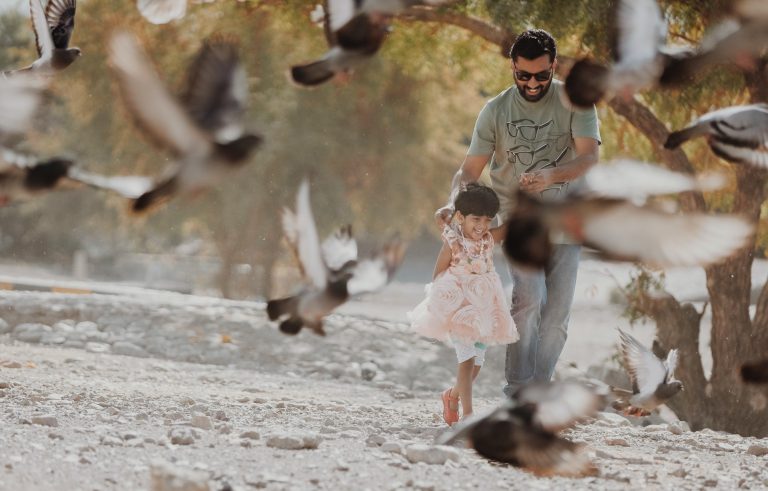Pigeons and people have known each other since ancient times. Over the course of history these birds have served as pets, messengers, sources of food and entertainment, and even heroes. What is it that makes these unassuming little birds so remarkable? Let’s start with their nomenclature.
What’s the difference between pigeons and doves?
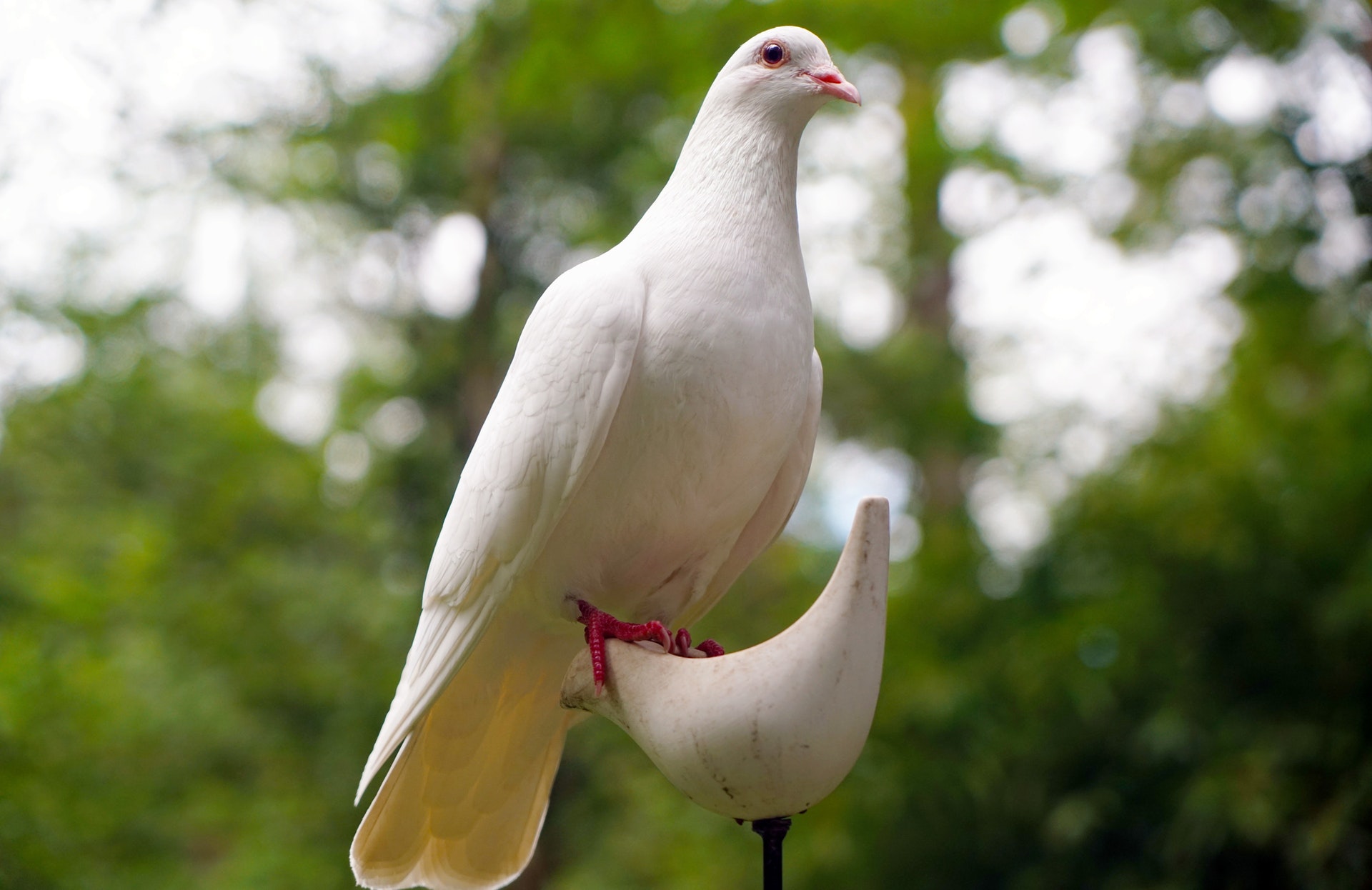
The word “dove” often brings to mind the lovely white bird used as a symbol of peace. However, one would be just as correct to call that bird a pigeon. Pigeons and doves refer to the same family of birds—Columbidae, and the difference is merely linguistic.
According to Paul Sweet at the American Museum of Natural History, the word “dove” is associated with Nordic languages, while “pigeon” originates from French. In truth, both words refer to one family of birds.
There is a tendency to use the word “pigeon” for larger birds and “dove” for the smaller birds, yet with some species the names are applied interchangeably, like the common pigeon, which is also called the “rock dove;” and the mourning dove, which was once called the “Carolina pigeon.”
Now that that’s clear, let’s explore this extraordinary bird.
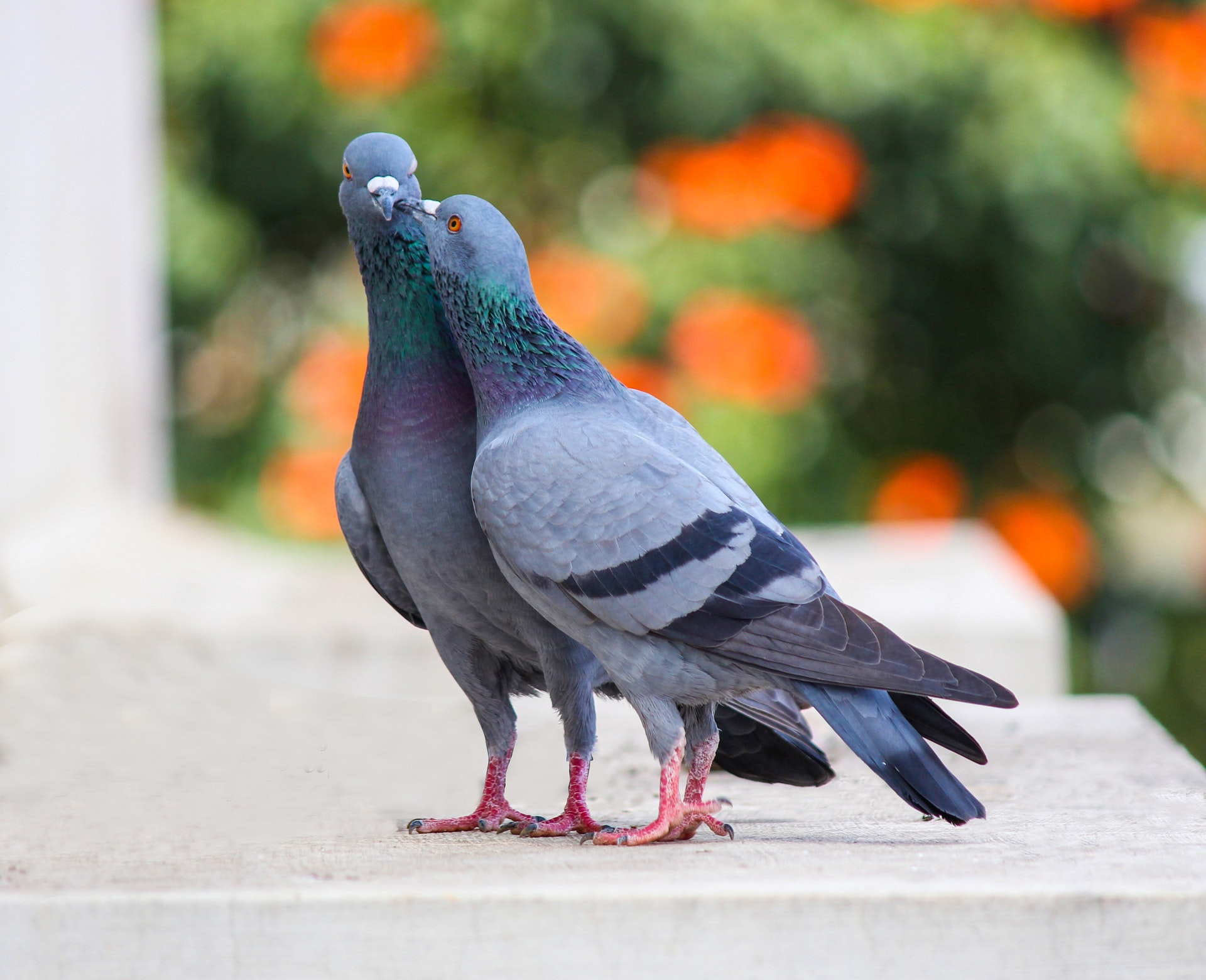
Love birds – pigeons and people both show compassion
Success
You are now signed up for our newsletter
Success
Check your email to complete sign up
The goddesses of love and fertility—Ishtar, Venus and Aphrodite—are all represented by doves. Bronze Age (2400-1500 BC) figurines of the Mother Goddess Ninhursag were discovered together with lifelike images of pigeons. Pigeons do possess a remarkable ability to reproduce, raising multiple two-egg clutches each year, but there are other reasons for their ties with these deities.
Back in the earliest civilization of Mesopotamia, rock doves (pigeons) were domesticated as a source of food. Upon observing their behavior, we began to recognize their honorable characteristics – they have a nurturing, family-oriented nature. They are monogamous and compassionate creatures, caring for each other and their young. Even their courtship is tender and endearing.
Pigeons mate for life and are extremely faithful to their partner. They can recognize their mate not only within a large flock of birds, but also after an extended separation. They show great distress when their mate or one of their offspring dies. In China the dove traditionally represented fidelity and longevity; but these birds also exhibited talents that were highly useful.
Homing instinct and carrier pigeons
Many birds possess a homing instinct—the ability to find their way home from anywhere—but the pigeon has the added benefit of being highly trainable, and also speedy (flying up to 60 miles per hour). This made them exceedingly useful in relaying messages long before telephones, radios, or even telegraphs were invented. In ancient Greece, homing pigeons were used to carry the results of the Olympic Games back to their villages.
This homing instinct comes from an ability to use magnetoreception, a sensing ability which allows many animals to be guided by the Earth’s magnetic field. This ability is largely what enabled these birds to assist us through “pigeon post”—delivering our important messages quickly and reliably.
If birds are used to deliver messages, one might wonder—how do they know where to go? Are they like the Hogwarts owls, who manage to find whatever recipient they’re told to give the message to? The answer is no. Homing pigeons can only find their own homes; so one bird can only provide one-way communication.
To use birds for correspondence, there is a good deal of planning and training involved.
A bird will first be raised at the recipient’s location, so that it will recognize this as the place to return to. To train it, the bird will be released to retrieve increasingly distant food treats and return home; enhancing its homing ability.
When the time for anticipated communication arrives, the pigeon must be taken to the location (or person) where the message will originate, and kept in a cage until it is needed. When the pigeon is released—with a written message attached to its leg—it will fly home, completing its task. It will not fly back the other way; so multiple pigeons are needed for two-way correspondence.
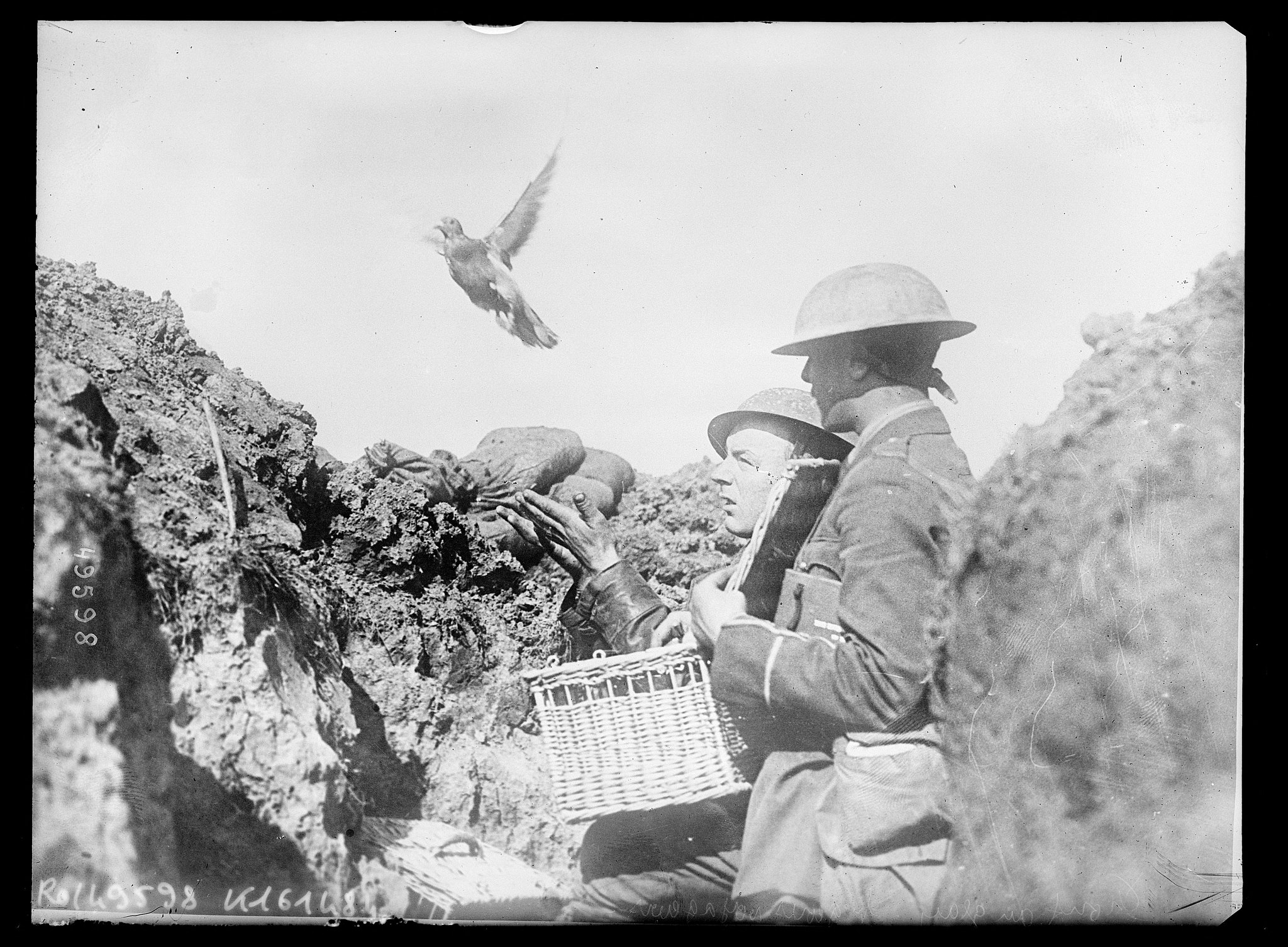
Service Pigeons
An estimated 100,000 carrier pigeons were employed by the US, France, Germany, and Britain during the First World War (1914 – 1918). After their training (beginning at five weeks old) at strategic locations, the pigeons were sent to the trenches. Birds released with a message would fly back to where they were raised—their “home.”
Despite gunfire, gas, and the occasional predator, pigeons were able to transfer vital information, often passing through enemy lines.
The most well-recognized war figure among birds is Cher Ami, who saved an entire battalion from friendly fire. Though he lost an eye and a leg, the pigeon was able to deliver his message and 194 men were saved. He received a medal for his heroic work.
Brainy birds
The term “bird brain” is never a compliment, yet pigeons are hardly lacking intelligence. Pigeons can be taught to recognize all 26 letters of the English alphabet.
In a study of pigeon brain power, the birds were trained in over 300 four-letter words and tested for recognition. Some pigeons were able to recognize dozens of words, distinguishing them from gibberish and also between correct and incorrect spellings.
Another study showed that pigeons are able to recognize human faces. As two researchers gave the pigeons food, one of them chased them away while the other simply let them be. The pigeons quickly learned to stay away from the person who shooed them, even when the two switched clothing.
Pigeons are one of the ten animals that can recognize themselves in a mirror. They can also be taught complex actions and response sequences.
READ MORE:
- Birds’ Abilities in Language Closer to Humans Than Any Other Animal – Even Primates
- The Beauty and Genius of Birds’ Treasures – Feathers
- Bubba the Rescue Bird Both Sings and Speaks
- The Piercing Tale Uncovering the Mystery of Bird Migration
The plight of the passenger pigeon
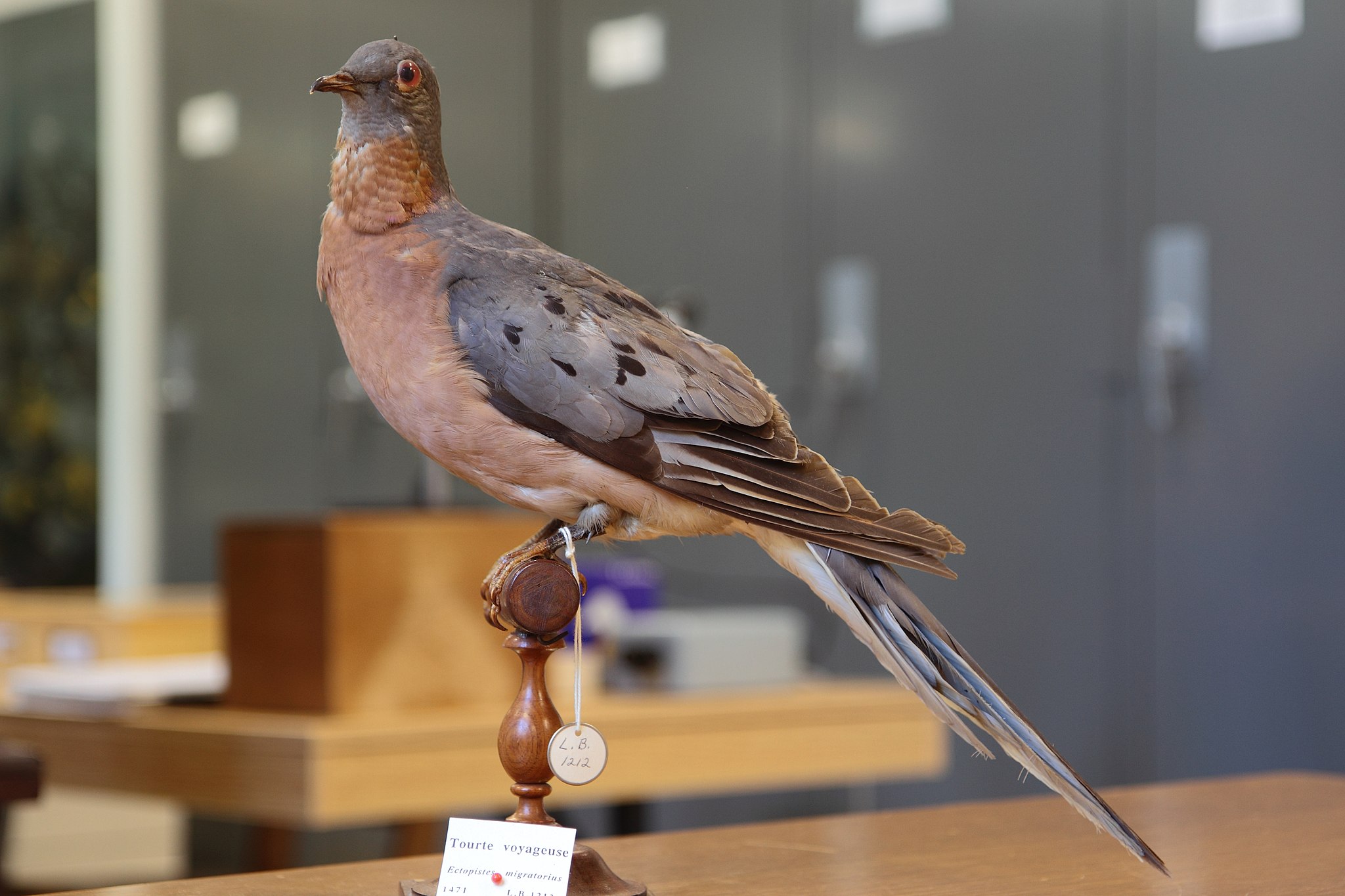
Very few, if any, would remember the passenger pigeon, once the most abundant bird in North America.
Numbering in the billions, migrations were said to happen en masse, taking hours for the millions of birds to pass through one location. The sound of their migration was compared to thunder, or the advance of an army on horseback; so loud that conversation was impossible. The sun would be blocked with their dense coverage in the sky.
The birds were noisy and destructive, decimating crops and weighing trees down to the point of breakage with their copious nests; but they were also an easy, and tasty source of meat—yet this was not enough to drive them to extinction.
New technology of the mid 19th century brought a swift end to their abundance. The telegraph enabled sportsmen and hunters to quickly share information about the birds’ movement and nesting, while the railroad allowed them to follow the flocks. This made it possible to commercialize the pigeon industry, which became almost like the gold rush.
As Wisconsin’s Kilbourn City Mirror reported in1871, “Hotels are full, coopers are busy making barrels, and men, women, and children are active in packing the birds or filling the barrels. They are shipped to all places on the railroad, and to Milwaukee, Chicago, St. Louis, Cincinnati, Philadelphia, New York, and Boston.”
The population of passenger pigeons dwindled sharply by the late 1800’s, until flocks consisted of mere dozens rather than millions. There were no conservation efforts at the time, and the last known wild bird was shot in 1901. Except for a few in captivity, the passenger pigeon was extinct.
In 1914, the last passenger pigeon, Martha, died at the Cincinnati Zoo. She lived to the age of 29, but never laid a single fertile egg in captivity.
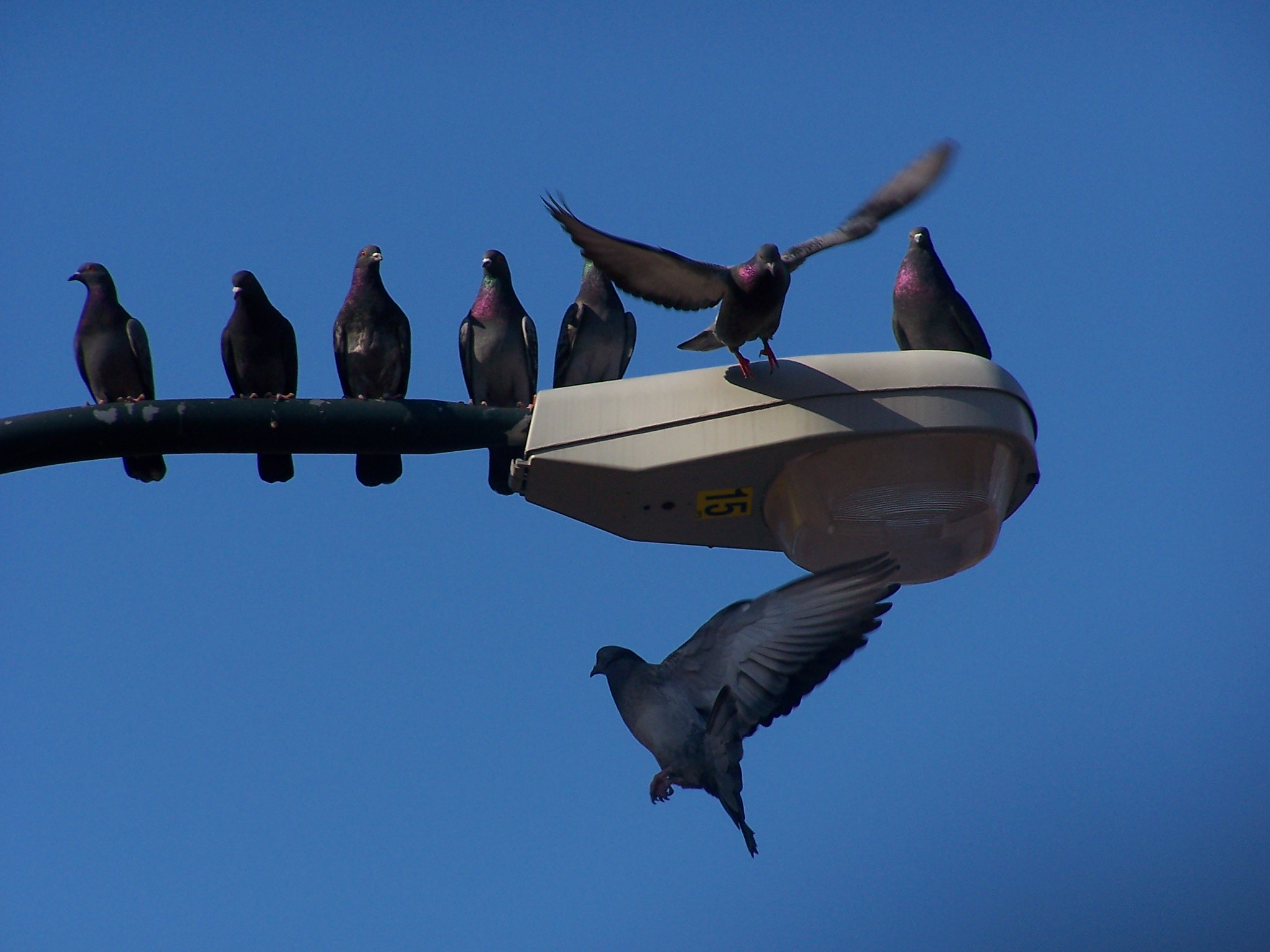
While the native mourning dove still thrives in North America, most of the pigeons we see today are descendants of birds introduced from Europe. While some are toying with the idea of re-introducing the passenger pigeon with modern gene technology, that is highly controversial, and most are satisfied to honor their memory by raising awareness about the importance of species preservation.
Although we no longer rely on birds for messengers, many people still keep and train pigeons. Racing has become a popular pigeon sport, especially in China; and breeding pigeons is a fascinating hobby that almost anyone can afford.



